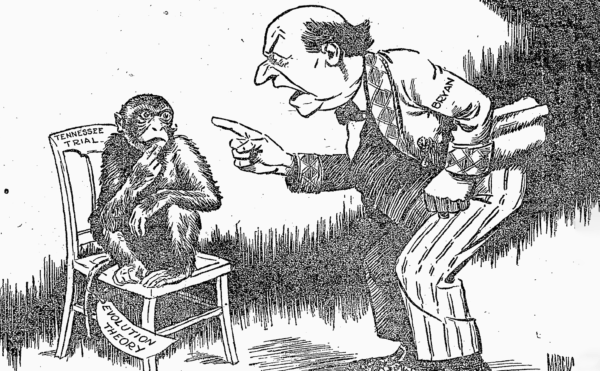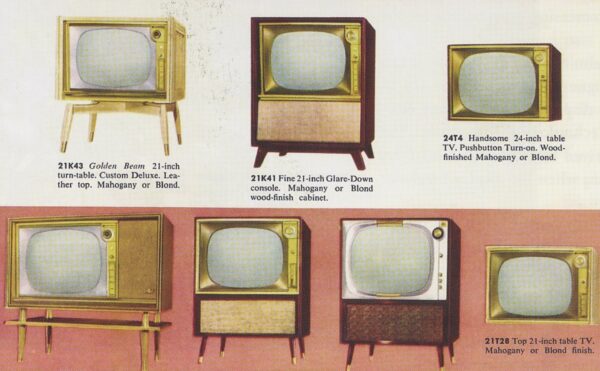A radiochemist born to an aristocratic Hungarian-Jewish family, György Hevesy dreamed of a Nobel Prize; but despite multiple nominations, he kept losing out. In August 1940, while working in Copenhagen with Niels Bohr, he found himself in the path of the Nazis as they overran Denmark. Tasked with protecting and hiding the Nobel Prize medals of two fellow scientists, Hevesy needed to pull off some clever chemistry tricks. But how did he fool Nazi storm troopers? And did he ever achieve his Nobel dream?
About The Disappearing Spoon
Hosted by New York Times best-selling author Sam Kean, The Disappearing Spoon tells little-known stories from our scientific past—from the shocking way the smallpox vaccine was transported around the world to why we don’t have a birth control pill for men. These topsy-turvy science tales, some of which have never made it into history books, are surprisingly powerful and insightful.
Credits
Host: Sam Kean
Senior Producer: Mariel Carr
Producer: Rigoberto Hernandez
Associate Producer: Sarah Kaplan
Audio Engineer: Rowhome Productions
Transcript
Coming up next week is the Oscars of science—the Nobel Prizes. So I want to share one of my favorite Nobel Prize stories ever. It involves the scientist György Hevesy.
Hevesy was a bald man with droopy cheeks and a trim mustache. He was born to an aristocratic Jewish family in Hungary in 1885. He did work that straddled both chemistry and physics. And as we’ll see, straddling that line ended up hurting his career.
Hevesy’s not very well known today, but I think that’s a shame; he should be. Both for the incredible work he did, and for pulling some of greatest stunts in science history. One in particular involved international smuggling, some dastardly Nazis, and a disappearing Nobel Prize. All that and more, coming up next…
In 1910, young György Hevesy arrived in Manchester, England, to study the hottest field in science. Radioactivity. His lab director, Ernest Rutherford, immediately assigned Hevesy a task involving a block of lead.
The lead was slightly radioactive. The source of that radioactivity was an unknown substance inside the lead. Rutherford called the substance radium-D. Rutherford wanted Hevesy to separate out all the radium-D so they could study it.
The job was analogous to asking someone to take a beaker of ocean water and separate all the salt out. Except, separating the radium-D would be much harder. But Hevesy was a gifted chemist. And Rutherford thought he could handle this Herculean task.
Actually, though, the task turned out to be not Herculean but impossible. You see, radium-D was not actually a separate substance. It was just a slightly heavier form of lead. A so-called isotope. And as we now know, it’s impossible to separate two isotopes of a substance using only chemistry. It just won’t work.
But Hevesy didn’t know that. No one even knew what an isotope was then. So Hevesy wasted two full years tediously trying to tease lead and radium-D apart. All to no avail. Talk about frustrating.
Outside the lab, Hevesy was also facing domestic frustrations. He was far from home, and missed savory Hungarian food. The bland English cooking at his boardinghouse just wasn’t cutting it. You can imagine the overcooked beef, the soggy peas, the bland mashed potatoes. Yuck.
Hevesy also noticed patterns in the meals that his landlady served. He was supposed to get fresh meat every day. But steak on Monday was always followed by, say, beef stew on Tuesday. Hmm. He quickly grew suspicious that his landlady was recycling ingredients. Her “fresh” daily meat was anything but.
Hevesy confronted her about this. She denied it. So Hevesy decided to seek proof.
Now, miraculously, he’d achieved a breakthrough in his lab around that time. He still couldn’t separate the radium-D from the lead. But he realized that maybe he could flip that problem to his advantage.
He’d been musing the possibility of injecting minute quantities of dissolved lead into a living creature. He hypothesized that the creature would metabolize the lead, which would move throughout its body.
And here was the cool part: the radioactive portion of the lead, the radium-D, would emit little beacons of radioactivity as it moved throughout the body. And by tracking these beacons, Hevesy could actually trace the outlines of veins and organs in the body. He could practically see inside them.
Which would be unprecedented. At the time, doctors had just started working with x-rays, a big breakthrough. But x-rays only illuminate bones. You can’t see the heart or lungs or kidneys.
Well, Hevesy’s radioactive tracers offered a way to do that—to see inside veins and organs. It could revolutionize medicine.
But before he tried using radioactive lead on the tissue of a living being, Hevesy decided to test the idea on the tissue of a nonliving being—a test with an ulterior motive.
One night at dinner, Hevesy took too much meat. And when his landlady’s back was turned, he sprinkled hot powdered radioactive lead all over it. His landlady gathered the leftovers like normal and whisked them into the kitchen. Supposedly to throw away.
The following day, Hevesy brought home a newfangled radiation detector from his lab buddy. Hans Geiger. That night at dinner, he asked his landlady, “Is the meat fresh?” She assured him, “Yes, yes, very fresh.” And he said, “Really. Let’s see.”
Sure enough, when Hevesy waved the detector over that night’s meal, the Geiger counter went furious. Click-click-click-click.
Hevesy confronted his landlady with the evidence. But, as a scientific romantic, Hevesy laid it on a little thick explaining the mysteries of radioactivity. In fact, his landlady was so charmed to be caught so cleverly, so scientifically, she didn’t even get mad.
There’s no historical record of whether she altered her menu, however.
Not long after this stunt, Hevesy’s career went a different direction. He paused the work on looking inside veins and organs with radioactive tracers. Instead, he got involved with hunting for new elements on the periodic table—work that straddled chemistry and physics.
To pursue this work, Hevesy left England for Copenhagen in 1920. There, he studied quantum mechanics with the Danish physicist Niels Bohr.
Now, in 1922, the box for element 72 on the periodic table was blank. Scientists knew that an element had to go there, but no one had discovered it yet. And discovering it would be a big deal—possibly worthy of a Nobel Prize. But there was controversy about what the properties of this element should be and where to find it in nature.
Picture a periodic table. It looks like a castle with turrets. But there’s this weird landing strip on the bottom. The top row of that landing strip contains the so-called rare-earth elements. For various reasons, rare-earth elements stick together in nature. If you find a mineral deposit with one of these elements, you’re like to find the rest as well. They stick together.
The rare-earth elements run from number 57 to 71. Back in the early 1900s, many chemists believed that element 72 would also be a rare earth. And because rare-earth elements stick together, they tried looking for element 72 in rare-earth ores and mineral deposits. A French chemist named Georges Urbain even claimed to have discovered it.
But some scientists didn’t buy Urbain’s work. One of them was Niels Bohr.
Bohr sat down in his office one day, and started using quantum mechanics to run some calculations on element 72. In particular, he wanted to know what its hypothetical properties would be. And Bohr realized that, according to his calculations, element 72 would not behave like a rare-earth element.
That was a big clue. If element 72 did not behave like a rare-earth element, it did not belong on the landing strip at the bottom of the periodic table. Instead, element 72 would be a brick in the table’s main body. Up in the castle part.
And if element 72 did belong in the main body, its box would sit below element 40, zirconium. Now, on the periodic table, elements that sit above and below each other have similar properties. They also mix together in nature.
So Bohr told Hevesy and another scientist to test some samples of zirconium and try to find element 72. And right away, they did. On their first attempt. It was probably the least-sweat discovery of an element in periodic table history. We now call element 72 hafnium, after the Latin name for its place of discovery: Copenhagen.
This discovery rocked the world of science. People were stunned that Bohr, using nothing more than equations and thought, had known exactly where to find element 72. He never even set foot in a lab. It seemed like magic.
It also seemed like a threat to chemistry. Bohr was a physicist, not a chemist. And his quantum mechanics had seemingly outfoxed chemistry. In fact, some scientists and philosophers declared that, in finding element 72 like that, Bohr had suddenly made chemistry obsolete. They said that the future belonged to physics, and that chemistry would soon be nothing but a quaint branch of physics.
Now, obviously that didn’t happen. Chemistry is thriving even a century later. But at the time, this seemed like a real threat. As a result, some chemists resented physics. Physics was invading their territory. They were especially mistrustful of people whose work straddled chemistry and physics. People like György Hevesy.
In 1924, György Hevesy was the frontrunner for the Nobel Prize in chemistry for discovering element 72. But the race quickly got ugly for this part-chemist, part-physicist.
Remember that a French chemist named Georges Urbain already claimed that he had found element 72 earlier, mixed in with a sample of rare-earth elements. Therefore, Urbain said that he, not Hevesy, deserved the Nobel Prize. He claimed priority.
Now, Urbain’s claims were controversial, partly because he found such microscopic amounts. So not everyone believed him. Unfortunately, in the early 1920s, Europe was still deeply divided after World War I. As a result, the priority dispute took on nationalistic overtones, of France versus Germany.
The French science community of course backed the Frenchman Urbain. Meanwhile, the Francophiles condemned Niels Bohr and György Hevesy as German—even though they were actually Danish and Hungarian. But, close enough. One French newspaper even sniffed that the whole controversy, quote, “stinks of Huns.” As if Attila the Hun himself had put on goggles and been working in the lab.
And even outside of France, many chemists mistrusted Hevesy for doing work that straddled chemistry and physics. He didn’t really seem like one of them—he was allied with those cocky physicists. Chemists didn’t have his back.
And that lack of backing, along with political bickering, prevented the Nobel committee from giving Hevesy the prize. Instead, the committee gave the 1924 Nobel Prize in chemistry to—no one. They left the prize blank. Hevesy was denied his honor.
Saddened by this loss, Hevesy left Copenhagen to work in Germany. There, he began a little side project. It involved determining how quickly the human body recycles an average water molecule. He did so by drinking so-called heavy water.
In heavy water, some of the hydrogen atoms have an extra neutron and are therefore a little heavier. Hevesy volunteered to gulp some heavy water, and then have his pee weighed each day. He found that the human body recycles an average water molecule every nine days. Pretty neat stuff.
Hevesy’s experiment worked—but in retrospect, drinking heavy water was more like playing with fire. We now know that heavy water can be deadly. In fact, I’ve put together a bonus episode about the dangers at patreon.com/disappearingspoon. This story is centered on someone often called the greatest scientist to never win a Nobel Prize. In fact, it was such an injustice that he, or she, possibly committed suicide over the matter. Can you guess who this scientist is? Find out at patreon.com/disappearingspoon.
Also in Germany, Hevesy resumed his work on radioactive tracers, the atoms that he hoped would move throughout the body and allow doctors to see inside veins and organs. And just like he hoped, it worked. He could see inside veins and organs. It was a breakthrough.
And throughout the 1930s, the few scientists who understood the value of this work kept nominating him for a Nobel Prize, over and over. But he kept losing out. Partly for political reasons, partly because people resented work that straddled chemistry and physics. And, because he kept losing the prize, Hevesy grew a little despondent.
Nevertheless, with his Jewish ancestry, Hevesy soon faced much worse problems than the lack of a Nobel Prize. Remember he’d left Copenhagen to work in Germany—which in the 1930s was overrun with Nazis. So Hevesy left Germany, and returned to Copenhagen to reunite with Niels Bohr.
And Hevesy was still in Copenhagen in August 1940—when Nazi storm troopers overran Denmark. Before long, they were knocking on the front door of Bohr’s institute.
Now, for various reasons, Denmark enjoyed more protection from the Nazis than other countries did. Niels Bohr was also an international celebrity. So however scared Hevesy was, his life was not in immediate danger in 1940.
However, other scientists’ lives were in danger. You see, in the late 1930s, two German scientists had sent their gold Nobel Prize medals to Niels Bohr in Denmark for safekeeping.
They did so for a simple reason. One was Jewish and the other was a Jewish sympathizer and defender. And they knew the Nazis would likely seize their medals if the medals remained in Germany. So they sent them to Bohr in Copenhagen.
However, Adolf Hitler had made exporting gold a capital crime in Germany. So the discovery of the medals in Denmark could lead to multiple executions. Bohr and Hevesy had to hide them.
But where? At first, Hevesy suggested burying the medals in the institute’s back yard. But Bohr thought that seemed a little obvious. I mean, you have a nice plush lawn, and then there’s two circles of dirt sitting there. Even idiot Nazis would know something was hidden there.
So Hevesy came up with a far more clever solution—one that drew on his chemistry skills. As he recalled, “while the invading forces marched in the streets of Copenhagen, I was busy dissolving … [the] medals” in acid. Specifically, he used aqua regia. It’s a caustic mix of nitric and hydrochloric acids. It’s one of the few solutions that can dissolve gold.
When the Nazis ransacked Bohr’s institute, they scoured the building for loot or evidence of wrongdoing—throwing open drawers and demanding to know what stood behind every locked door. But, ignorant of chemistry, they left the beaker of orange aqua regia untouched.
Now, Hevesy was forced to flee Copenhagen in 1943. But when he returned to his battered laboratory after V-E Day, he found the innocuous beaker sitting undisturbed on a shelf. He precipitated out the gold, and the Swedish Academy recast the medals for scientists who’d sent them to Bohr.
Hevesy’s only complaint about the whole ordeal was that he missed a day of lab work while fleeing Copenhagen.
But even if Hevesy didn’t complain, the whole ordeal must have been emotional for him. There was the threat of Nazi occupation, obviously. But even beyond that, there was his personal pain over the Nobel Prize.
It must have been bittersweet for him to hold those two Nobel medals, after having missed the prize so many times himself. And as he was dropping them into acid, he must have wondered if he’d ever come so close to a Nobel Prize again. In fact, dissolving the medals must have seemed like a fitting metaphor for his own dreams.
But, I’m happy to report that the story does not end there. Because in 1944, at long last, Hevesy finally won a Nobel Prize of his own.
He won it for his work on radioactive tracers. And deservedly so. That work spawned a whole new branch of medicine. If you’ve ever had a doctor give you or a loved one some radioactive tracers to look at your lungs or heart or kidneys, you can thank György Hevesy. He revolutionized how doctors work across the world.
And it all grew out of the quarrel with his landlady and the radioactive meat. That stunt eventually paid off with one of the most well-deserved Nobel Prizes in history.




